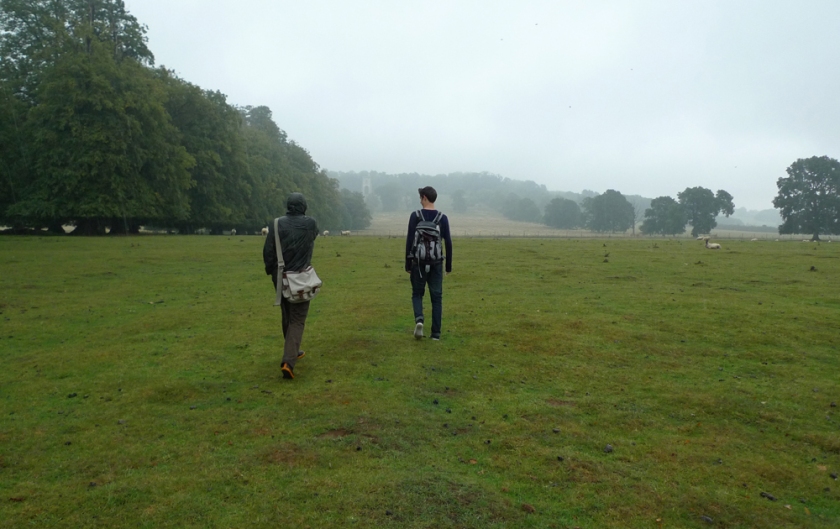Guest blog from Felix Mayle, former landscape history student (2009-2012)
I graduated from UEA in the summer of 2012, with a BA in History and Landscape Archaeology. Since graduating I have worked for English Heritage’s Gardens and Landscapes team as a paid intern and, since 2nd April, as Heritage Project Officer for Heritage Lincolnshire and the Lincolnshire Wolds Countryside Service.
When I started at UEA in 2009, I can safely say that I had little or no idea what I wanted to do after leaving university, and subsequently had no plan in place for life after graduation. I was originally enrolled to read a degree in Modern History but by the end of my second year I had decided to change my degree course over to Landscape Archaeology. Having taken several modules within the Landscape History area as free choices, I had been captivated by the enthusiasm of the lecturers, the rich, diverse content and multi-disciplinary nature of the course and the wonderful field trips!

A Landscape Special Subject field trip to Audley End, Essex (May 2012).
Around the time of changing my degree and throughout my final year, I felt that I would like to enter into a career within the heritage sector. Having done some research into the sector, through the UEA careers service and talking with the landscape history lecturers, it became clear that to be employable in heritage, experience would be invaluable. With this in mind, it was fantastic news to hear that the landscape history team were running a new module for the 2011/2012 academic year – Working in the Historic Environment, a work placement module carried out over the summer between second and third year and backed up with seminars in the spring semester.

Belton House, Lincolnshire.
With help from the landscape team, I was able to arrange a placement to work with the National Trust at Belton House in Lincolnshire. The experience I gained from this placement has been integral in helping me to get both of my post university jobs. The project management, report writing and hands on work are skills I regularly use on a day-to-day basis. The icing on the cake was when the Channel 4 show Time Team asked to use the report I wrote for the project as part of their research for one of their episodes, a welcome bonus to my CV!

Examining the remains of a First World War machine gun training camp in the park at Belton (JULY 2011).
During my third year, in the spring semester I also undertook a voluntary work placement with a local authority – Breckland District Council where I was able to put into practice all of the skills I had gained from my degree into action: presentations, research and analytical skills, project management and writing for different audiences.
I began to look for graduate jobs towards the end of the Spring Semester in 2012, after a seminar where we looked at all of the places that heritage orientated jobs might be advertised online. Although I did not seriously begin to look for graduate jobs until after I had finished my final pieces of work and exams in my final year. Between finishing the exam period and graduation day, I applied for one or two jobs that came up but had been unlucky and began to think that I should broaden my horizons and apply for graduate schemes in other sectors.
Once I had received my final degree result, it was a massive confidence boost in applying for jobs and as graduation loomed, the ideal job came up in the form of the intern position at English Heritage. Reading the job specification was like reading and ticking off a checklist of skills I had developed from studying the landscape history course at UEA. The landscape history team were extremely supportive in helping me with my application, they looked through my CV and covering letter and once I had been offered an interview, they helped me with my preparation for it by offering me interview tips and guidance.
The knowledge and skills they imparted were also invaluable as I applied for and successfully got the job I an now doing. You can find out more about the project I’m currently working on here – http://www.down-your-wold.co.uk/









